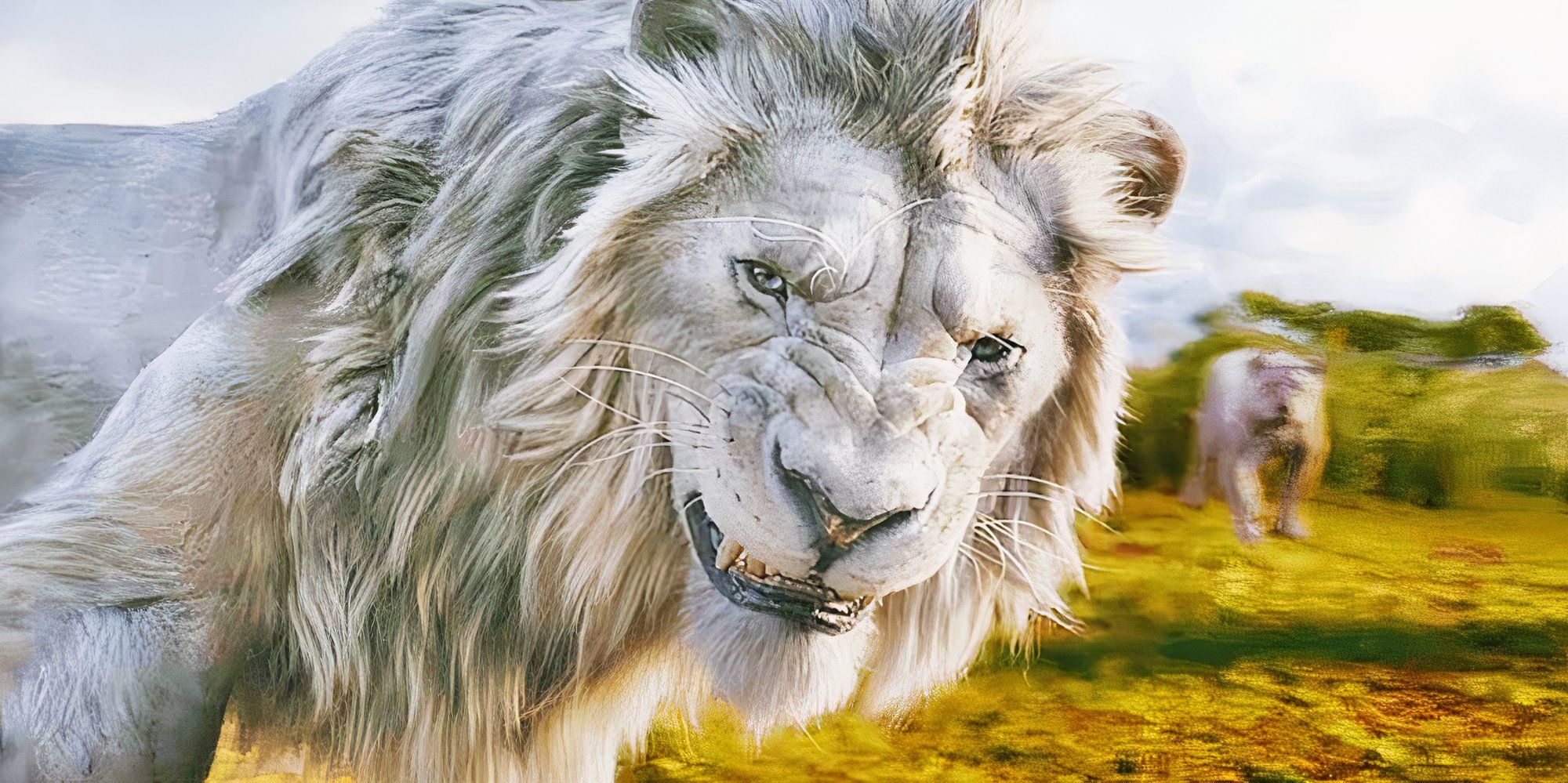The Lion King's White Lions Explained: Movie & Real Life Facts
Warning! This article contains spoilers for Mufasa: The Lion King!
Mufasa: The Lion King introduces a new group of villainous white lions. These "Outsiders," as they are called in the Disney prequel movie, present a serious threat to the various lion prides of the valley. It's because of them that Mufasa and Taka must set out on their journey, and with these white lion Outsiders that the final showdown of Mufasa: The Lion King takes place. They certainly make for intriguing villains, but white lions aren't an invention of Disney. This new Lion King movie has taken inspiration from real groups of mutated lions that have been found in South Africa for generations.
2024's Mufasa: The Lion King serves as a sequel and prequel in one, as it sees Rafiki tell Simba and Nala's daughter, Kiara, the story of how Mufasa came to be king. A significant reveal of the film's start is that Mufasa wasn't born with royal blood. He was an ordinary lion who became separated from his parents and eventually accepted by a new pride. However, Mufasa's adoptive family was plagued by a group of Outsiders who sought to eliminate the lion kings of the valley until their leader, Kiros, was the last one standing.
The Outsiders In The Lion King Explained
Who Are The Outsiders?
The Outsiders of Mufasa: The Lion King is a pride of all white lions. They are larger than the typical lions of South Africa and several times as cruel. Rafiki eventually explains that these white lions weren't all born to this single pride. Instead, they were born to typical tawny lions and cast out due to their differences—their white fur. Over the years, these rejected lions came together to form a single pride led by King Kiros. Rafiki explained that being rejected and unloved by their original prides caused terrible anger within these white lions, leading to their desire for vengeance.
3:07 Related Mufasa: The Lion King: Cast & Character Guide Find out who voices Mufasa and the rest of the pack in the 2024 Lion King prequel.
Kiros' pride of white lions became a legend among the other prides of the Valley of Kings. Taka's father, Obasi, hadn't seen them before but greatly feared "Outsiders" who could weed their way in and destroy a pride. For this reason, Obasi feared Mufasa. However, Taka's father ultimately learned who the true Outsiders were when they attacked and wiped out his pride in Mufasa: The Lion King.
Why The Outsiders Were Hunting Mufasa & Taka
While Mufasa and his adoptive mother, Eshe, were hunting, they were attacked by two male Outsiders. Mufasa killed one of them, while the other was injured and returned to his pride to report to Kiros. It's ultimately revealed that the lion Mufasa killed was Kiros' son and the heir to his pride. To seek revenge, Kiros led an attack against Obasi's pride. However, before the white lions appeared, Obasi sent Mufasa and Taka away. Since Mufasa was the one responsible for Kiros' son's death, and Taka was Obasi's heir, the Outsider lions pursued both lions all the way to Milele.
Are White Lions Real?
White Lions Are A Naturally Occurring Mutation
Mufasa: The Lion King naturally took some creative liberties with the dynamics of South Africa's lion prides, but Disney didn't invent white lions entirely. According to the Global White Lion Protection Trust, these animals are native to the Kruger-to-Canyons Biosphere region in South Africa. The earliest recorded sighting of White Lions in this area comes from 1938, but oral records indicate that they have been living and multiplying there for several centuries. Over the years, White Lions have been heavily targetted by hunters, so their numbers have diminished, though activists' efforts have seen their population rise.
Like in Mufasa: The Lion King, White Lions are born among the general tawney population. They do not have albinism. Instead, White Lions' unique coloration results from a specific genetic mutation, the specifics of which were only identified in 2013. It was believed, for a time, that White Lions had gone extinct, but they began reappearing in the Kruger-to-Canyon Biosphere region in 2006, further proving that the gene responsible for these lions continues to be naturally carried by lions in this specific place on the globe. Since this is where The Lion King is set, it makes sense that White Lions would come into play.
How White Lions Are Different From Regular Lions
White Lions Are Different Only In Appearance
Custom image by Yailin Chacon
In Mufasa: The Lion King, the White Lions are larger and more powerful than the standard tawney lions. However, this isn't the case in real life. Aside from their coloration, White Lions share very few differences from their general population. White Lions can range from a more blonde color to nearly pure white, and their general color is called "leucism." Unlike Albino animals, White Lions are not prone to any other genetic difficulty. Their eyesight is typical, and aside from being a more significant target among human trophy hunters, White Lions have no survival disadvantages.
Related Mufasa: The Lion King Review - Disney's Prequel Gamble Pays Off Thanks To Barry Jenkins' Compelling Vision Even with a few flaws, Barry Jenkins' Mufasa: The Lion King has enough heart and depth to stand on its own feet and surpass its 2019 predecessor.
It used to be believed that White Lions could not survive in the wild due to hunting disadvantages. Their fur was thought to make camouflage difficult. However, a study carried out by the Global White Lion Protection Trust over 10 years found that White Lions are just as effective hunters as their tawney counterparts in free-roaming areas. There is also no evidence in the real world that White Lions face any sort of ostracization from tawney prides as they do in Mufasa: The Lion King. Additionally, there are no recorded all-White Lion prides in South Africa.
White Lions In The World Today
White Lions Are Now All Over The World
Image via Disney
Today, White Lions are still observed and hunted in the wild of South Africa, where they are considered to be of low concern by the Convention for the International Trade in Endangered Species. This is a status that is being fought by the Global White Lion Protection Trust, which seeks to protect these uniquely colored beings. In an effort to ensure White Lions' continued survival, a breeding program has been established at the Inkwenkwezi Private Game Reserve, where they cannot be hunted.
Additionally, there are White Lions in captivity in a variety of zoos. The Toronto Zoo received three White Lions in 2012, and through them, four more White Lions were born in the zoo in 2015. Siegfried & Roy famously had possession of two White Lions at the Cincinnati Zoo until the last died in 2022. As well as several more in North and South America, White Lions are kept in captivity on nearly every continent. So, while they may no longer persist in Simba's Pride Lands after Mufasa: The Lion King, White Lions continue to thrive all around the world.











COMMENTS